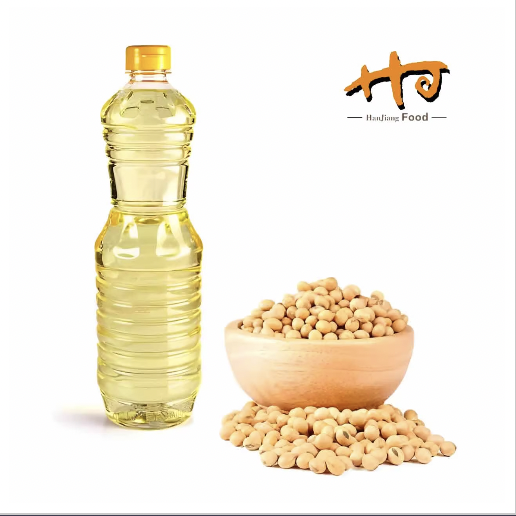Inzicht in de premiumkwaliteit van A-klasse sojaolie
Het kiezen van de perfecte A-klasse soja-olie voor uw culinaire en industriële behoeften vereist zorgvuldige overweging van meerdere factoren. Deze veelzijdige olie is steeds populairder geworden vanwege haar uitzonderlijke kwaliteit, voedingsvoordelen en brede toepassingsmogelijkheden. Of u nu een professionele kok, voedingsproducent of een consument bent die let op gezondheid, inzicht in de nuances van A-klasse sojaolie helpt u bij het maken van een weloverwogen keuze.
Sojaolie van graad A vertegenwoordigt de hoogste kwaliteitsstandaard op de markt en wordt gekenmerkt door superieure helderheid, een verfijnde smaak en optimale verwerkingsomstandigheden. Deze premium classificatie zorgt ervoor dat u een product ontvangt dat voldoet aan strikte kwaliteitscontroles en industrienormen, waardoor het geschikt is voor diverse toepassingen, van koken tot industrieel gebruik.

Kwaliteitseigenschappen van premium sojaolie
Fysische eigenschappen en uiterlijk
Sojaolie van graad A heeft duidelijke fysische kenmerken die het onderscheiden van lagere graden. De olie heeft een heldere, licht gouden kleur en behoudt uitstekende helderheid bij kamertemperatuur. De viscositeit wordt zorgvuldig geregeld tijdens het verwerkingsproces om een consistente prestatie te garanderen in verschillende toepassingen. Wanneer de olie correct is geraffineerd, toont graad A sojaolie uitstekende stabiliteit en weerstand tegen troebeling, zelfs onder koelingsomstandigheden.
Het verfijnde karakter van sojaolie van klasse A zorgt ook voor een neutrale geur en smaak, waardoor het ideaal is voor toepassingen waar een pure, subtiel aroma gewenst is. Deze eigenschap laat de natuurlijke smaken van andere ingrediënten naar voren komen, zonder storende bijsmaken.
Chemische samenstelling en stabiliteit
De chemische samenstelling van sojaolie van klasse A wordt zorgvuldig gecontroleerd om de premium kwaliteit te behouden. Het bevat een optimale balans van meervoudig onverzadigde vetzuren, waaronder essentiële omega-3 en omega-6 vetzuren. Het raffinageproces zorgt voor een minimaal gehalte aan vrije vetzuren en peroxidewaarden, wat bijdraagt aan verbeterde stabiliteit en een langere houdbaarheid.
Geavanceerde verwerkingsmethoden verwijderen ongewenste stoffen terwijl de gunstige componenten behouden blijven, waardoor een olie ontstaat die haar kwaliteit behoudt, zelfs onder moeilijke omstandigheden. Deze stabiliteit maakt sojaolie van klasse A bijzonder waardevol voor gebruik in de commerciële voedingsindustrie en bij kooktoepassingen met hoge temperaturen.
Toepassingen en gebruiksaanwijzingen
Culinair gebruik
In professionele keukens en thuisgekook bewijst graad A sojaolie haar nut vanwege haar veelzijdigheid. Het hoge rookpunt maakt het uitstekend geschikt voor diepgevries, bakken en wokken, terwijl haar neutrale smaakprofiel haar perfect maakt voor bakken en saladedressings. Professionele koks waarderen hoe het de natuurlijke smaken van ingrediënten naar voren haalt zonder concurrerende smaken toe te voegen.
De constante prestatie van de olie in verschillende temperatuurbereiken maakt het ideaal voor het maken van emulsies en marinades. Haar stabiliteit zorgt ervoor dat gerechten hun kwaliteit behouden tijdens opslag, waardoor het een betrouwbare keuze is voor commerciële voedselbereiding.
Industriële en productiegebruiken
Buiten de keuken biedt graad A sojaolie talloze industriële toepassingen. Voedselproducenten vertrouwen op haar consistentie voor de grootschalige productie van verpakte producten, sauzen en gebak. De raffinagekwaliteit van de olie garandeert voorspelbare resultaten in formulekritische toepassingen, terwijl haar stabiliteit bijdraagt aan een langere houdbaarheid van producten.
De cosmetische en farmaceutische industrie gebruikt eveneens graad A sojaolie als basisbestanddeel in diverse producten, waarbij de zuiverheid en verenigbaarheid met andere ingrediënten worden gewaardeerd. De betrouwbare samenstelling maakt het geschikt voor technische toepassingen waarbij precieze specificaties moeten worden nageleefd.
Best Practices voor Opslag en Gebruik
Optimale opslagomstandigheden
Goede opslag is cruciaal voor het behouden van de kwaliteit van graad A sojaolie. Bewaar de olie op een koele, donkere plaats buiten direct zonlicht en warmtebronnen. De ideale opslagtemperatuur ligt tussen 18 en 24°C (65-75°F). Zorg ervoor dat de containers goed afgesloten zijn wanneer ze niet in gebruik zijn, om oxidatie en besmetting te voorkomen.
Voor commerciële operaties helpt de implementatie van een first-in-first-out (FIFO) voorraadsysteem bij het behouden van versheid en kwaliteit. Regelmatig in de gaten houden van opslagomstandigheden en producten wisselen zorgt voor een consistente oliekwaliteit gedurende de houdbaarheid.
Tips voor het in stand houden van kwaliteit
Om de premium eigenschappen van sojaolie van klasse A te behouden, vermijd blootstelling aan lucht, licht en vocht. Gebruik geschikte containers van voedselkwaliteit, voorkeurshalve donkergekleurd of ondoorzichtig om lichtblootstelling te minimaliseren. Regelmatige kwaliteitscontroles, inclusief visuele inspectie en basiskwantitatieve chemische tests, helpen de standaarden in commerciële bedrijven in stand te houden.
Het toepassen van juiste handelingsprocedures, zoals het gebruik van schone, droge keukengerei en het vermijden van kruisbesmetting, verlengt de gebruiksduur van de olie. Het opleiden van personeel in correcte hanteringsmethoden zorgt voor een consistente kwaliteit in commerciële omgevingen.
Een Geïnformeerde Aankoopbeslissing Nemen
Leveranciersbeoordeling
Kies leveranciers met een erkende reputatie en controleerbare kwaliteitsborgingsmaatregelen. Vraag analyseverslagen en productspecificaties aan om naleving van de klasse A-standaarden te garanderen. Overweeg leveranciers die transparante productieprocessen hanteren en documentatie kunnen verstrekken over hun kwaliteitsborgingsprogramma's.
Het opbouwen van relaties met betrouwbare leveranciers zorgt voor een consistente toegang tot sojaolie van hoge kwaliteit (klasse A). Regelmatige communicatie over uw specifieke eisen helpt om de productkwaliteit en efficiëntie van de supply chain te behouden.
Kosten-batenanalyse
Hoewel sojaolie van klasse A een hogere prijs kan vragen in vergelijking met lagere kwaliteiten, rechtvaardigt de superieure kwaliteit en prestaties vaak de investering. Houd rekening met factoren zoals beoogd gebruik, opslagcapaciteit en verwachte houdbaarheid bij het beoordelen van kostenefficiëntie. Bereken de totale eigendomskosten, inclusief mogelijke verminderde verspilling en verbeterde productkwaliteit.
Voor commerciële operaties dient u rekening te houden met de invloed van de olie op de kwaliteit van het eindproduct en de klanttevredenheid. De consistente prestaties en betrouwbaarheid van sojaolie van klasse A leiden vaak tot langere termijn kostenbesparing door verminderde verspilling en verbeterde productresultaten.
Veelgestelde Vragen
Wat maakt sojaolie van klasse A anders dan andere kwaliteiten?
Graad A sojaolie ondergaat strengere raffinageprocessen en kwaliteitscontroles, wat resulteert in superieure helderheid, stabiliteit en prestaties. Het voldoet aan striktere normen voor onzuiverheden, vrije vetzuren en peroxidegetallen, waardoor het ideaal is voor premium toepassingen.
Hoe lang kan graad A sojaolie worden opgeslagen?
Wanneer het correct wordt opgeslagen in afgesloten containers onder optimale omstandigheden, behoudt graad A sojaolie doorgaans zijn kwaliteit gedurende 12-18 maanden. De opslagduur kan echter variëren afhankelijk van de omgevingsomstandigheden en de manier van hanteren.
Kan graad A sojaolie worden gebruikt voor koken bij hoge temperaturen?
Ja, graad A sojaolie is uitstekend geschikt voor koken bij hoge temperaturen vanwege zijn hoge rookpunt (ongeveer 232°C/450°F). Hierdoor is het geschikt voor diepgevriesfrituren, wokken en andere kookmethoden met veel hitte, terwijl de stabiliteit behouden blijft.

 EN
EN
 DA
DA
 AR
AR
 NL
NL
 FI
FI
 FR
FR
 DE
DE
 EL
EL
 HI
HI
 IT
IT
 JA
JA
 KO
KO
 NO
NO
 PL
PL
 PT
PT
 RU
RU
 ES
ES
 SV
SV
 TL
TL
 ID
ID
 SR
SR
 UK
UK
 VI
VI
 HU
HU
 TH
TH
 TR
TR
 FA
FA
 AF
AF
 MS
MS
 GA
GA
 MK
MK
 HY
HY
 KA
KA
 BN
BN
 LA
LA
 MN
MN
 NE
NE
 MY
MY
 KK
KK
 UZ
UZ
